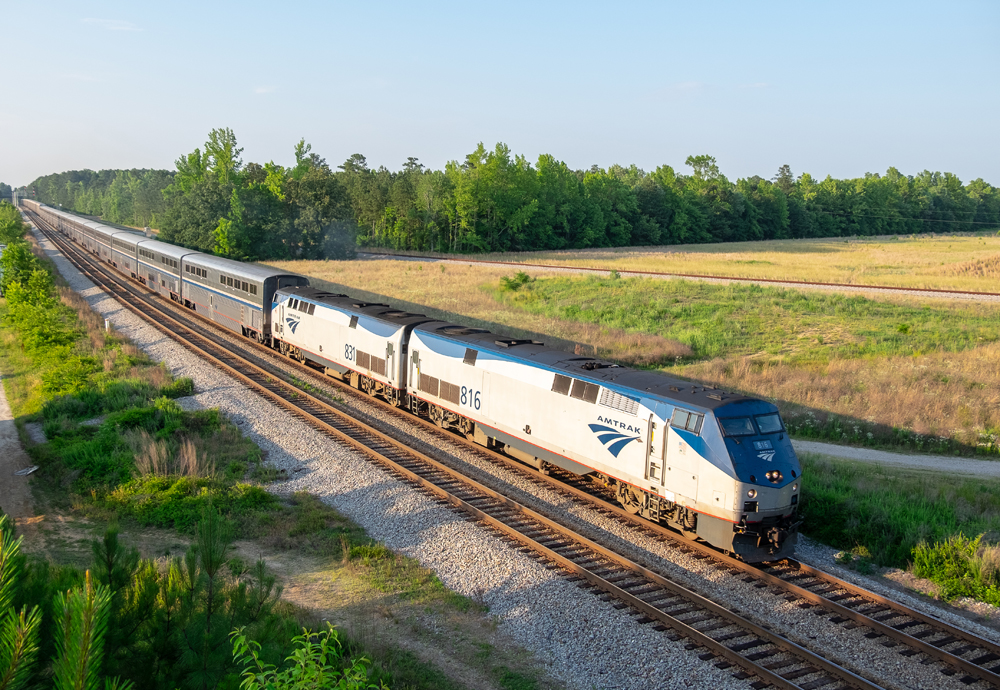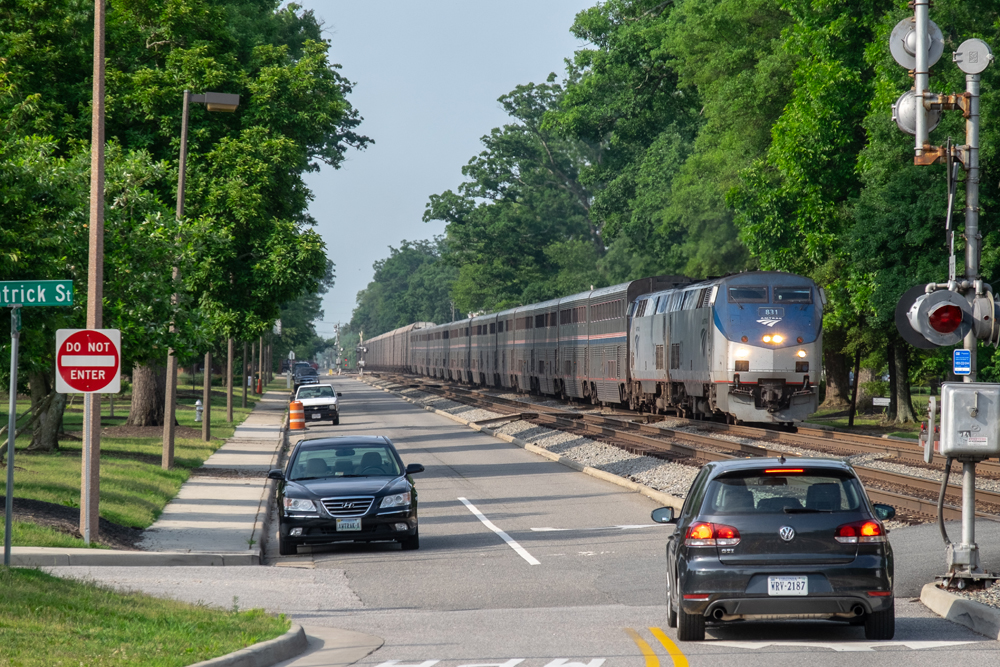Amtrak’s most unusual train

Dirk Nadon is a New Hampshire radio magnate who owns Lakes Media. He and I have worked together developing radio promotions for the Conway Scenic Railroad. At one point he said to me, “You’ll like this! A few years ago, I took this great train ride called the Auto Train — do you know it?”
He was brimming with enthusiasm over the experience. This radio connection reminded me to call my old friend Doug Riddell, also a Trains contributor, who was once a radio announcer for WREA in Richmond (among other stations) and is a retired locomotive engineer. Doug is part of the Auto Train story, having run both the original privately owned Auto-Train and its Amtrak successor, and is the author of two books on the subject. This allowed me to blend the stories of two radio guys with completely different perspectives on America’s most unusual passenger train.
The original Auto-Train was the brainchild of Eugene Garfield. The privately run passenger train and automobile-ferry service began operations between Lorton, Va., and Sanford, Fla., in 1972 and was envisioned as a profitable service at a time when most other domestic passenger operations were in financial free-fall.
My recollections of this operation stem from a brief exploration of the facilities at Sanford with my dad in December 1980. It was one of the few times I saw a Baldwin diesel in action. Sadly, by that stage the original company was in deep financial trouble and much of the equipment in the yard was showing signs of neglect, some having been damaged in wrecks in the mid-1970s. The company ended operations just a few months later in the spring of 1981.
Amtrak’s Auto Train was the vision of W. Graham Claytor Jr., a retired Southern Railway executive, who assumed the Amtrak presidency in July 1982. This was when Amtrak’s subsidies were under threat by the Reagan Administration. Claytor identified Garfield’s moribund Auto Train as a potential profit center and moved to acquire some of the company’s assets, like the name and customer list.
Amtrak’s Auto Train began operations on the Lorton-Sanford route in Oct. 1983, initially running tri-weekly, but soon becoming a daily train.
For locomotive enthusiasts, one of the distinctive attributes of the train is its history with General Electric diesels that dates to the original train. Amtrak’s Auto Train era started with GE P30CH locomotives, which Doug Riddell says were well-suited to the service.
In June 1993, Auto Train debuted Amtrak’s new GE Genesis Series I diesels (designated as P40s by Amtrak) with engines 802 and 804. Based on Dash 8 technology, the P40s have remained standard power on the Auto Train despite their relative obsolescence. Because of their older air-brake schedule, Riddell notes, the P40 gives the engineer superior control of unusually long and heavy consists by allowing for power-braking (“stretch braking”) in all throttle positions. This reduces the amount of slack action in the train and results in a better ride for passengers.
Dirk’s personal experience
Good ride quality is important, because the Auto Train has evolved into Amtrak’s premium service featuring distinctive qualities that Dirk was eager to tell me about:
“I’m not a rail enthusiast, at least I don’t think I am, but right before COVID my wife and I were traveling with her daughter and her daughter’s friend, whom were both about to begin nursing school in Sarasota, Fla. We were faced with complicated travel since we needed to get the four of us and two vehicles from New Hampshire to Florida. As anyone who has done the drive knows, it’s a long slog down I-95, the stretch through Virginia, the Carolinas, and Georgia can be especially tough. I’ll be honest, I’ve done this drive a few times, and I can’t stand it. A friend suggested that I try the Auto Train, and so we did. I bought our tickets online and we drove overnight from New Hampshire arriving at Lorton, as suggested, by 2 p.m.” (Amtrak currently advises Auto Train passengers to check-in no later than 3 p.m., warning travelers there are ‘no exceptions for late arrivals.’)
Overall, Dirk was impressed by the check-in process. “They took our cars and brought us to our pair of roomettes. I loved this. The Auto Train is like a classy hotel on wheels. Amtrak treated us like royalty! The Amtrak staff and crew were nicely dressed and very polite. This was so cool. It allowed us all to travel together instead of fighting traffic in separate automobiles. Instead of 12-14 hours of stress, we got to look out the window and watch the world go by. We had dinner in the diner and slept in our roomettes …”
Dirk really enjoyed sleeping on the train and waking up in Sanford. Him and his wife spent about two weeks in Florida. They helped the young women get settled into school, and then they took the time needed to explore Disney. “I’d do it all again in a minute!” said Dirk











You really printed “him and his wife “???!! David P. Morgan and Rosemary Entinger must be twirling in their graves. HE and I. HE and his wife.
John, John, try to remember English grammar is no longer taught in schools. Us can only expek “editers” will seen they’re errers. 8+0
John and others:
John, I concur with your comment.
Even if some members of the general public fail to learn, to remember, to practice, or to care about proper grammar and composition,
we professional writers and editors (including those at Kalmbach) have a continuing duty to maintain and enforce high standards of correctness.
How soon will medical schools fail to teach the niceties of accuracy and thoroughness of surgery on living human bodies?
Will our society accept such sloppiness in surgery — because such details are no longer relevant?
Would we even now accept sloppy work in the repainting of a car or a house — because high standards no longer matter?
Good grammar and correct composition still matter — greatly.
PS. Likewise “WHOM were both about to begin nursing school ….”
Amtrak has no “published schedules”. Potential customers must inspect each departure day to see IF and WHEN it runs.
Would love to see a few more Auto Train routes developed. Midwest to Florida. Midwest or East Coast to California with a potential stop in Denver. Neither one of those trains need to be daily at first.